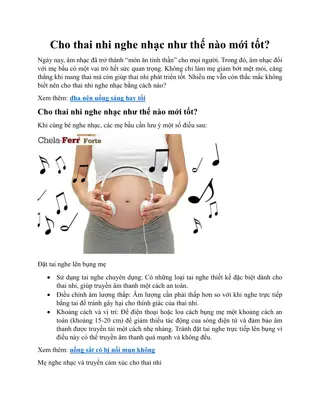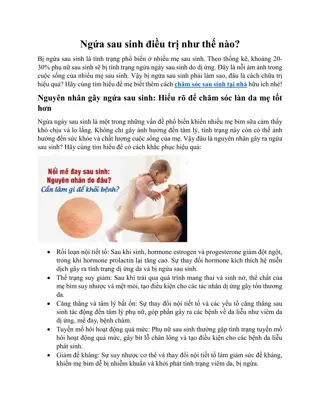By the end of this lecture you will be able to:
This lecture covers the mechanisms of ovulation, hormonal regulation, and classification of ovulation-inducing drugs like Clomiphene and Tamoxifen. It delves into their pharmacological effects, administration protocols, indications, efficacy rates, and adverse effects. The content also discusses the treatment of conditions like hyperprolactinemia and polycystic ovarian syndrome (PCOS) with relevant medications.
Download Presentation

Please find below an Image/Link to download the presentation.
The content on the website is provided AS IS for your information and personal use only. It may not be sold, licensed, or shared on other websites without obtaining consent from the author.If you encounter any issues during the download, it is possible that the publisher has removed the file from their server.
You are allowed to download the files provided on this website for personal or commercial use, subject to the condition that they are used lawfully. All files are the property of their respective owners.
The content on the website is provided AS IS for your information and personal use only. It may not be sold, licensed, or shared on other websites without obtaining consent from the author.
E N D
Presentation Transcript
By the end of this lecture you will be able to: Recall how ovulation occurs and specify its hormonal regulation Classify ovulation inducing drugs in relevance to the existing deficits Expand on the pharmacology of each group with respect to mechanism of action, protocol of administration, indication, efficacy rate and adverse effects.
Hypothalamus GnRH Anterior Pituitary 4. Rx Hyperprolactinaemia 1.Antiestrogens D2 R agonists SERMs; Clomiphene Tamoxifen Bromocreptine 3.Gonadotrophins HMGs;Menotropin HCGs; Pregnyl FSH / LH 2.GnRH (-) GnRH-agonists Leuprolin Goserelin Ovary Estrogens Progestins 5. Rx POLYCYSTIC OVARIAN SYNDROME (PCOS) Most common cause of infertility Insulin resistance may play a role ??? Metformin Normogonadotrophic
ANTIESTROGENS Hypothalamus GnRH Anterior Pituitary 1. CLOMIPHENE Pharmacological effects Compete with estrogen on the hypothalamus and anterior pituitary gland; negative feed back of endogenous estrogen GnRH production of FSH & LH OVULATION Clomiphene FSH / LH (-) Ovary Estrogens Progestins Indication Female infertility; due to anovulation or oligoovulation . not due to ovarian or pituitary failure Normogonadotrophic The success rate for ovulation 80% & pregnancy 40% .
Method of administration - Clomiphene given 50 mg/d for 5 days from 5th day of the cycle to the 10th day. - If no response give 100 mg for 5 days again from 5th to10th day - Each dose can be repeated not more than 3 cycles . ADRs 6. Fatigue 7. Weight gain 8. Hair loss (reversible) 9. Hyperstimulation of the ovaries & high incidence of multiple birth. 1.Hot Flushes & breast tenderness 2. Gastric upset (nausea and vomiting) 3. Visual disturbances (reversible) 4. nervous tension & depression 5. Skin rashes
2. TAMOXIFEN Is similar & alternative to clomiphene But differ in being Non Steroidal Tamoxifen is a good alternative to clomiphene in women with PCOS and clomiphene-resistant cases Used in palliative treatment of estrogen receptor- positive breast cancer.
Hypothalamus GnRH Anterior Pituitary Hypothalamo-pituitary 1.Antiestrogens SERMs; Clomiphene Tamoxifen FSH / LH (-) 2.GnRH GnRH-agonists Leuprolin Goserelin Ovary Estrogen Progestins Ovarian
2. GONADOTROPIN RELEASING HORMONE (GnRH) Uses: Induction of ovulation in patients with hypothalmic amenorrhea (GnRH deficient) Analgoues with agonist activity: Leuprolin, Goserelin - GnRH and agonists, given S.C. in a pulsatile (drip) to stimulate gonadotropin release (1 10 g / 60 120 min) Start from day 2-3 of cycle up to day 10
HYPOTHALAMUS GnRH Agonists - Given continuously, when gonadal suppression is desirable e.g. precocious puberty and advanced breast cancer in women and prostatic cancer in men GnRH Continuous Pulsatile - + + GnRHR ANTERIOR PITUITARY FSH LH
ADRs OF GnRH Agonists GIT disturbances, abdominal pain, nausea .etc Headache Hypoestrogenism on long term use Hot flashes Libido Osteoporosis Rarely ovarian hyperstimulation (ovaries swell & enlarge)
Hypothalamus GnRH Anterior Pituitary Hypothalamo-pituitary 1.Antiestrogens SERMs; Clomiphene Tamoxifen 3.Gonadotrophins HMGs;Menotropin HCGs; Pregnyl FSH / LH 2.GnRH (-) GnRH-agonists Leuprolin Goserelin Ovary Estrogen Progestins Ovarian
3.GONADOTROPHINS [FSH & LH] Are naturally produced by the pituitary gland For therapeutic use, extracted forms are available as; 1. Human Menopausal Gonadotrophin(hMG ) extracted from postmenopausal urine contains LH & FSH MENOTROPIN 2. Human Chorionic Gonadotrophin(hCG) extracted from urine of pregnant women contains mainly LH) PREGNYL Indication Stimulation & induction of ovulation in infertility 2ndry to gonadotropin deficiency (pituitary insufficiency) Success rate for inducing ovulation is usually >75 %
GONADOTROPHINS Method of administration hMG is given i.m every day starting at day 2-3 of cycle for 10 days followed by hCG on (10th - 12th day) for OVUM RETRIEVAL . ADRs FSH containing preparations; Fever LH containing preparations; Headache & edema Ovarian enlargement (hyper stimulation) Multiple Pregnancy (approx. 20%)
4. Hyperprolactinaemia D2 R Agonists Is an ergot derivative (not a hormone) BROMOCREPTINE Bromocreptine Mechanism D2 R Agonists binds to dopamine receptors in the anterior pituitary gland & inhibits prolactin secretion Indications Female infertility 2ndry to hyperprolactinaemia ADRs GIT disturbances; nausea, vomiting, constipation Headache dizziness & orthostatic hypotension Dry mouth & nasal congestion Insomnia No Ovulation Hyperprolactinaemia
L L G G U U O O C C O O K K D D























